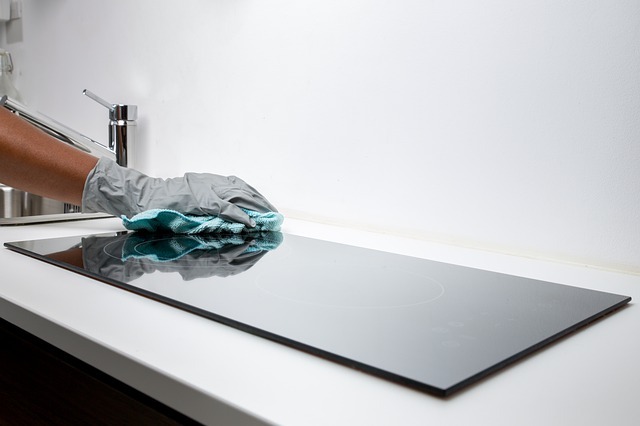We use a lot of white vinegar in our house. Is that weird?Primarily we use it to clean with. It is a cleaning POWERHOUSE. We’re not sure at what point people decided that they needed to load the area underneath their kitchen sink with harsh, poisonous chemicals, but somewhere along the line a huge segment of America was convinced that unless the product stank to high heaven and killed small children if ingested, then it wasn’t going to get their shower clean.We have not bought into that lie. If you’ve been around this blog for a little while, you’ll remember our grapefruit all-purpose cleaner. It’s definitely a favorite and relies heavily on cleaning vinegar for its cleaning power. In our post on homemade dishwasher detergent, we also suggest using vinegar as a rinse aid.
But what other harsh, chemical-laden, cleaners can one cut out? We can’t use vinegar to scour with. It isn’t going to get my clothes clean. What should we use? Please note, there are two types of vinegar – plain, white vinegar and cleaning vinegar. While you CAN use white vinegar for cleaning, you CANNOT use cleaning vinegar for cooking.
That’s when you turn to an amazing, quick and easy to read, resource like the eBook Natural Cleaning by Katie Wells of the blog Wellness Mama. Here’s a quote from the book:
There are many difficult parts of switching to a healthier and more natural way of living, and fortunately, switching to natural cleaners isn’t one of them. Natural cleaners are easy to make, work just as well and often cost much less than their conventional alternatives. This guide gives you the tools to keep your house clean on a budget without the chemicals.
Natural cleaning is a 25 page eBook that is straightforward and provides natural recipes and instructions for:
- wood floor cleaner
- oven cleaner
- heavy duty scouring powder
- and more!
The book also contains several pages dedicated to natural laundry solutions, as well as a whole house cleaning checklist.
Unfortunately, the eBook was part of a bundled package and it is no longer available. You can, however, find much of the information available on two of her blog posts:
If you missed getting the book, here are some ideas about what vinegar SHOULD and SHOULD NOT be used to clean.
SHOULDN’T CLEAN WITH VINEGAR
- Soapstone, marble, or granite countertops. Since vinegar is acidic, and acids don’t mix with natural stone, don’t use vinegar to clean these types of countertops. They will cause pitting and no shine will be left.
- Clothes iron. If you use vinegar in your clothes iron, it could damage the inner workings. Search online to find the proper way to clean an iron.
- Kitchen knives. Keep your kitchen knives looking like new by washing only with dish soap and water, NOT vinegar.
- Solid wood furniture. Don’t clean solid wood furniture with undiluted vinegar because it can leave water marks or the vinegar’s acid could ‘eat’ specific types of finish. You CAN, however, mix together half white vinegar and half olive oil to buff stained and oiled finishes.
- Messes that are egg-based. If you use vinegar to clean up a mess with eggs, you’ll create more of a mess instead of cleaning it up. This is because the vinegar causes the proteins in the egg to coagulate. It is better to clean up this type of mess with a damp, soapy washcloth.
USE CAUTION WHEN CLEANING WITH VINEGAR
Here are some surfaces you CAN clean with vinegar, but you’ll want to use them sparingly because porous surfaces can be damaged by acidic cleaners. If you want to use vinegar to clean them, be sure to heavily dilute with water or another cleaning ingredient.
- Hardwood floors
- Stone floors
- Grout
SHOULD CLEAN WITH VINEGAR
The list of surfaces you CAN clean with vinegar is much longer than the SHOULDN’T and USE CAUTION lists.
- Washing machine
- Dishwasher
- Refrigerator
- Toilet bowl
- Clogged drains
- Carpet
- Windows and mirrors
- Humidifier
- Hard water stains
- Sticky stuff
- Soap scum
- Garbage disposal
- Smelly towels
- Suede
- Oily skin
- Microwave
- Reusable shopping bags
- Denim
- Vinyl auto interiors
Of course, as with any type of substance, be sure to read the instructions and warnings on the package label. You SHOULD NOT cook with cleaning vinegar because it may not have been tested for impurities and may be dangerous to your body. It is important to keep your cleaning vinegar and your cooking vinegar separated so there is no confusion.

